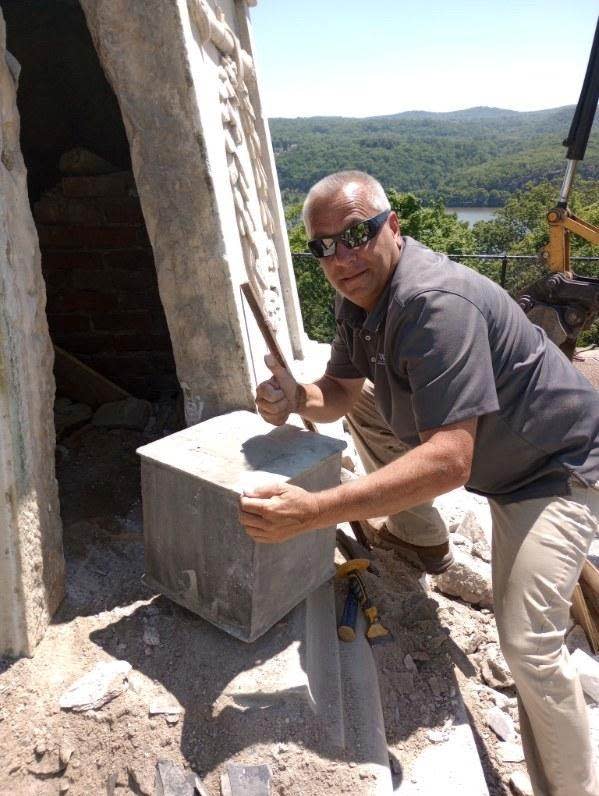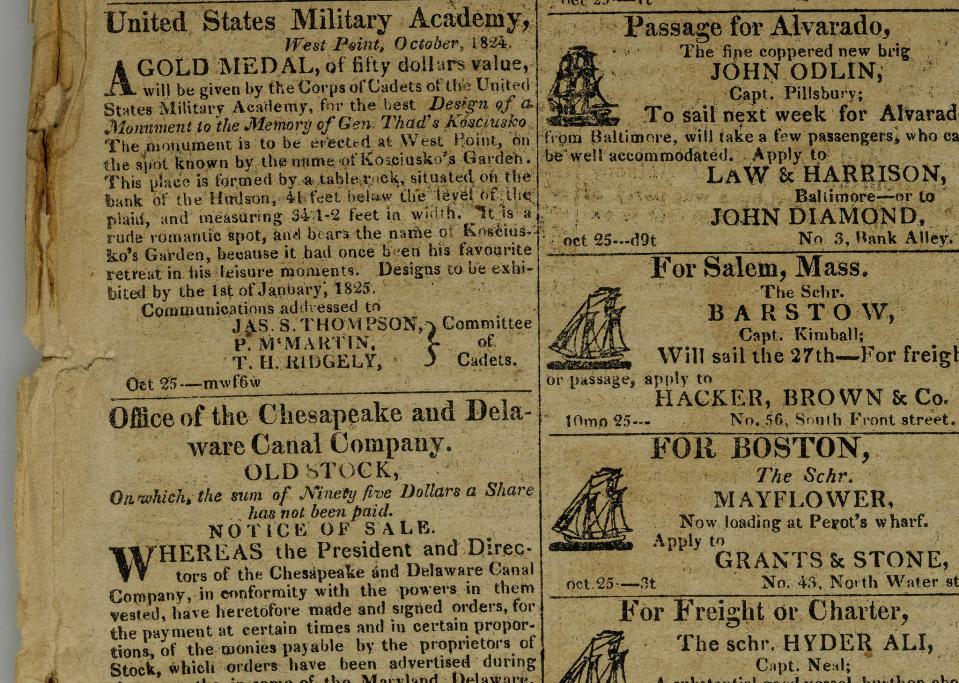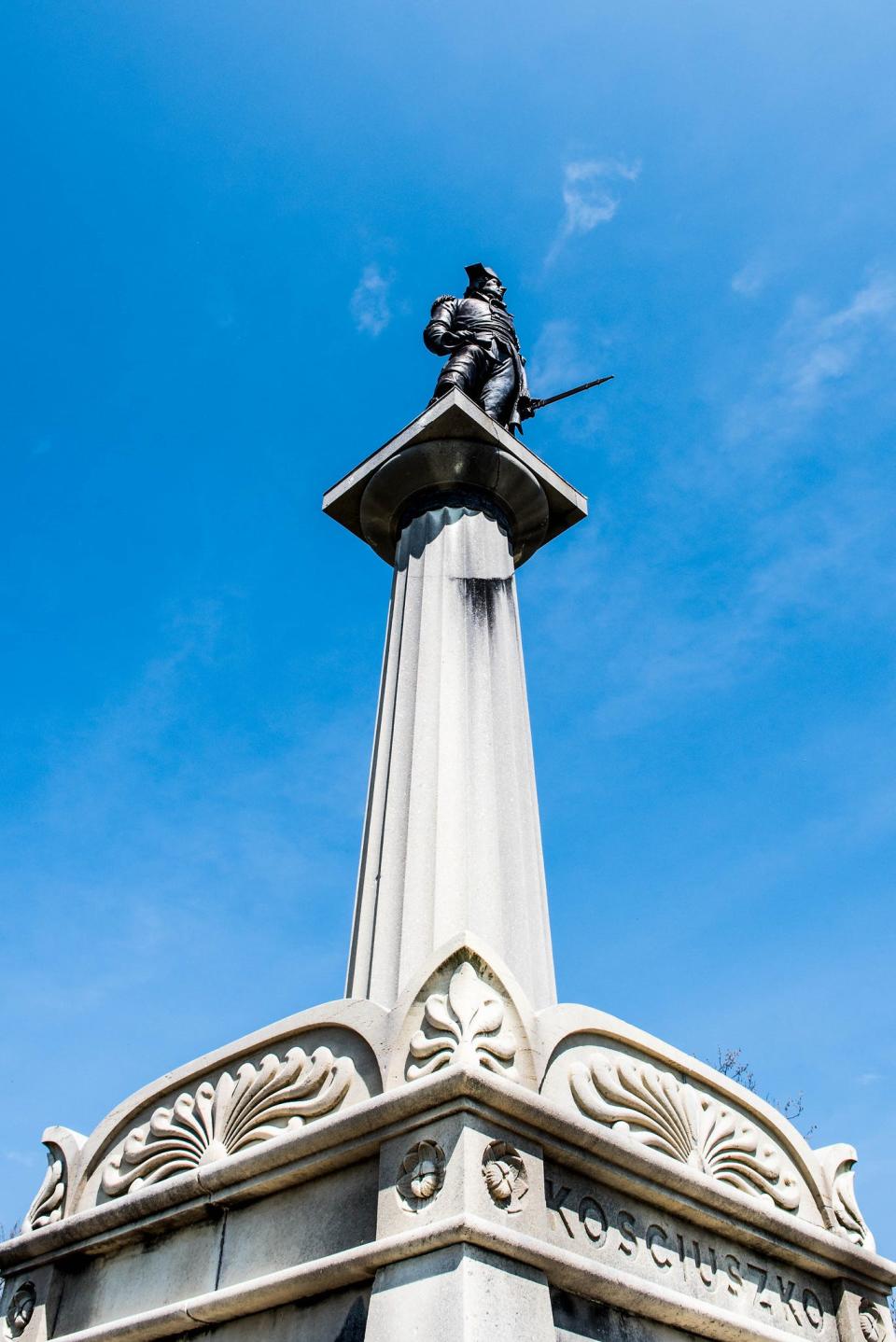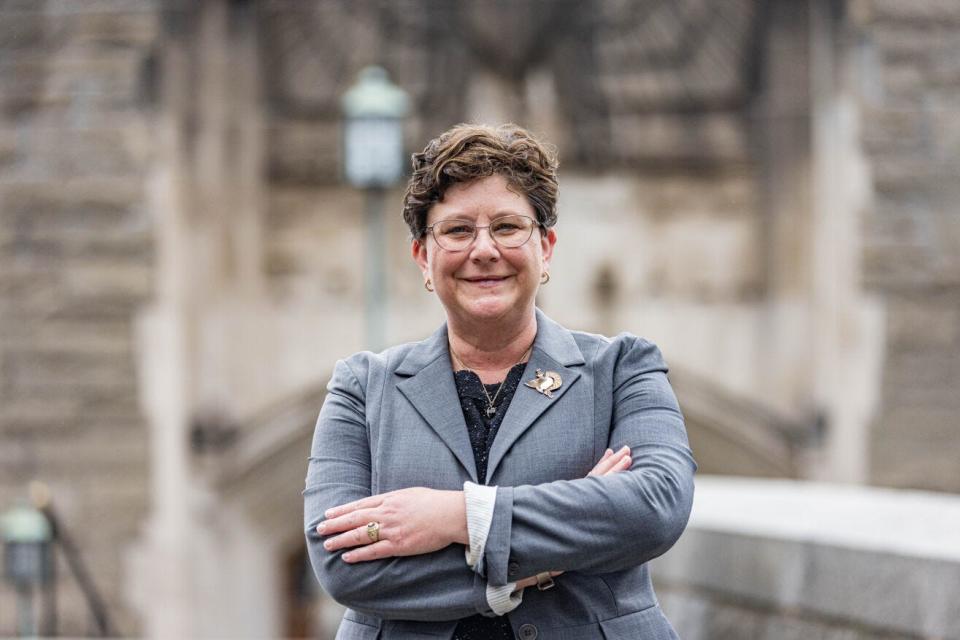WATCH: What's inside a West Point time capsule placed when Lee was a cadet?
- Oops!Something went wrong.Please try again later.
- Oops!Something went wrong.Please try again later.
Watch the opening of the time capsule here live at 10:30 a.m. Monday, Aug. 28.
WEST POINT − No one knows what's inside a lead box discovered this spring inside a monument dedicated to Revolutionary War patriot Thaddeus Kosciuszko, but that's about to change.
A history mystery nearly 200 years in the making will be solved Monday during a livestream event at the United States Military Academy when the box will be opened. It is believed to be a time capsule from 1829, the year a cadet from Virginia named Robert E. Lee graduated from West Point.
In late May, crews were disassembling the cracking base of the monument to Kosciuszko when they discovered the box and concluded it was a time capsule placed there by cadets.
This being the military academy, the post's archaeologist was called and took custody of the box, which measures one cubic foot. He documented and photographed the artifact. Within weeks, a member of the academy's department of physics and nuclear engineering trained a high-powered X-ray device on the box, but could not get any conclusive results about the contents because the box is made of lead.
That led to a decision to reveal the box's contents live on West Point's YouTube page, in a ceremony at 10:30 a.m. in Robinson Auditorium at the academy's Thayer Hall.

The event could be a spectacular boon or a bust akin to the live television broadcast on April 21, 1986, of Geraldo Rivera opening Al Capone's secret vault. Before a live audience of 30 million viewers, Rivera discovered it held nothing but dust and debris.
It has also led to all sorts of speculation: What could be inside a time capsule placed just 26 years after the academy was founded?
Turning unknowns to knowns
Jennifer Voigtschild, West Point's command historian, is accustomed to finding history, not having history find her. Voigtschild scoured West Point archives for clues.
She found an advertisement in a national newspaper from October 1824, offering a gold medal worth $50 for the winning design for a Kosciuszko monument to be erected at West Point. It was to go at "a rude romantic spot" called Kosciuszko's Garden "because it had once been his favorite retreat in his leisure moments."
The design contest's winner was John Latrobe, a former cadet who had been first in his class when he was forced to leave West Point in 1821 after his father's death a year earlier. His father, Benjamin Latrobe, knew a thing or two about monuments: He designed the U.S. Capitol.
The younger Latrobe's design was a base with a 10-foot-tall fluted column atop it, the pedestal for an 8 1/2-foot bronze statue of Kosciuszko that would be added in 1913.

While a carving in the base of the monument reads that it was erected by the corps of cadets in 1828, intended to be dedicated July 4 of that year, Voigtschild learned there was a delay of nearly a year.
There were questions about whether the time capsule was placed in 1829 or when the statue was placed in 1913. But a few facts led the historian to settle on the earlier date: bricks inside the base were dated to before 1850; time capsules placed in the 1910s were more often made of copper, not lead; and there was no record of a time capsule in 1913, when such a detail would not have escaped mention.
Kosciuszko, Benedict Arnold, Major Andre
Col. Thaddeus Kosciuszko was appointed engineer in chief by Gen. George Washington in 1778 to fortify West Point and keep British ships from plying the strategically important Hudson River.
"He was here for 28 months, from April 1778 to August 1780, the chief engineer for the fortifications of West Point," Voigtschild said. "He did such a great job, they later called it the Gibraltar of the Hudson."
In August 1780, the same month Kosciuszko left, Benedict Arnold took command at West Point.
A month later, Arnold plotted to give British spy Maj. John Andre a map of Kosciuszko's defenses, plans that could give the British control of the vital Hudson and split the rebellious colonies. The plot was foiled when Andre was discovered with the West Point defense plans tucked in his boot. Andre was hanged on Oct. 2, 1780 in Tappan, New York, where Washington had his headquarters; Arnold fled to Canada and, after the war, to Britain.

Kosciuszko, a Polish soldier who was vital to American independence, was a colonel during the revolution, but he was promoted to brigadier general at the end of the war, in 1783, Voigtschild said.
Kosciuszko is also the namesake of a bridge linking Brooklyn and Queens, over the Newtown Creek.
What's inside? Guesses abound
A video titled "Tap, Tap, Tap," posted to the West Point Instagram page, shows a worker using a chisel to test the strength of the seal on the box. The post asks what people think might be in the capsule.
One poster offers a guess that nods to the Army's penchant for polished metal and the fact that Lee was a cadet at the time: "My guess … CDT Robert E Lee’s can of Brasso (metal polish) that someone cadet borrowed and never returned."
Asked if Lee might have played a role in the placing of the capsule and dedication of the monument, Voigtschild paused.
"Ooooh, I don't know," she said. "We'll see more."
"It could have been (West Point Superintendent Sylvanus) Thayer who did it. It could have been the cadet committee who did it. It could have been Charles Petigru, who wrote the dedication speech that was not delivered. It could've been Cadet Thompson, who graduated in July of 1828. He was the committee chair that chose the design. There's so many exciting things that we don't know."

The historian has seen the box and noted the bottom has a seam that appears to have opened slightly and shows some weathering. That might mean the contents were exposed to water.
"But it was pretty dry inside the base of the monument," she said.
Empty or full, 'a great story'
Voigtschild takes the historian's long view on Monday's opening ceremony.
"No matter what is in the box, we think that it's a great example of cadets or the academy personnel leaving something because they thought that Kosciuszko was so important to the history of the academy and to the nation for what he did during the Revolutionary War," she said.
"Even if the box is empty, the fact that there was a box and that they had that forethought for future cadets and future citizens of the nation, that's a great story."
Voigtschild said she knew of no other time capsules found at West Point, but she knows of one that was placed in recent years.
"We do have one that we put into Davis Barracks in 2018 when we built that barracks," she said, adding that it included a curriculum book, notes on academy and cadet history, "and maybe some uniform items."
As for what's in the box, the historian wonders if perhaps a copy of Petigru's speech is in there to show how it was dedicated.
The work to replace the base and restore the Kosciuszko statue to his perch overlooking the Hudson continues. A new base of solid granite clad in marble will replace the original base, with one small addition: "They're going to build a little vault for us to put a new time capsule back there," Voigtschild said.
Reach Peter D. Kramer at pkramer@gannett.com.
This article originally appeared on Rockland/Westchester Journal News: West Point to open time capsule placed when Robert E Lee was a cadet

